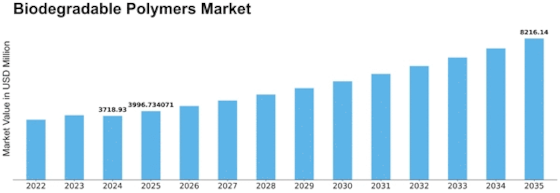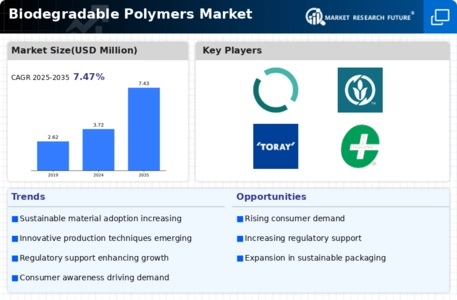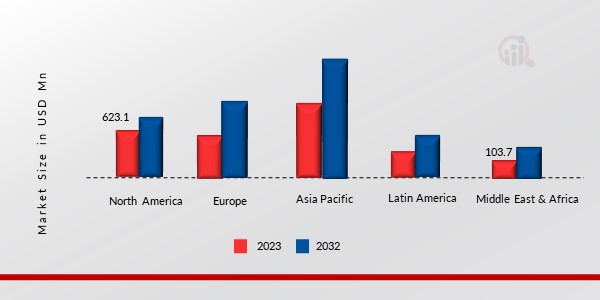-
executive summary 15
-
MARKET ATTRACTIVENESS ANALYSIS 17
- global Biodegradable Polymers market, by Ttpe 18
- global Biodegradable Polymers market, by end-use industry 19
-
MARKET INTRODUCTION 20
-
DEFINITION 20
-
SCOPE OF THE STUDY 20
-
MARKET STRUCTURE 21
-
RESEARCH METHODOLOGY 22
-
RESEARCH PROCESS 22
-
PRIMARY RESEARCH 23
-
SECONDARY RESEARCH 24
-
MARKET SIZE ESTIMATION 24
-
TOP-DOWN and BOTTOM-up APPROACH 25
-
FORECAST MODEL 26
-
LIST OF ASSUMPTIONS & LIMITATIONS 27
-
market dynamics 28
-
introduction 28
-
Drivers 29
- increasing demand for Biodegradable PolymerS in THE packaging Industry 29
- Favourable government policies supporting biodegradable polymers 30
-
restraints 32
- High Cost and lack of quality standards of Biodegradable Polymer 32
-
opportunities 33
- rapid growth in demand for Biodegradable PolymerS in THE medical sector 33
-
challenges 34
- Rising concerns regarding the disposal of biodegradable polymer 34
-
Market factor analysis 36
-
supply chain analysis 36
- Raw Material Suppliers 36
- Biodegradable Polymer manufacturers 37
- Distribution & sales channel 37
- End users 37
-
Porter''s Five Forces Analysis 38
- threat of new entrants 38
- bargaining power of suppliers 39
- threat of substitutes 39
- bargaining power of buyers 39
- intensity of rivalry 39
-
Pricing Overview, by region, 2019-2030 (USD/Ton) 40
-
impact of covid 19 outbreak on THE Biodegradable Polymer MARKET 40
- Qualitative Analysis of the COVID-19 Impact on THE Supply Chain 40
- Qualitative Analysis of the Demand-Side Impact fROm the End Users 41
-
Global Biodegradable Polymers Market, BY TYPE 42
-
OVERVIEW 42
-
Global Biodegradable Polymers Market size, Market estimates & forecast BY TYPE, 2019-2030 42
- Global Biodegradable Polymers MARKET SIZE: MARKET ESTIMATES & FORECAST BY TYPE, 2019-2030 42
-
Global Biodegradable Polymers Market size, Market estimates & forecast BY TYPE, 2019-2030 43
- Global Biodegradable Polymers Market size: MARKET ESTIMATES & FORECAST BY TYPE, 2019-2030 43
-
Global Biodegradable Polymers Market, By End-Use Industry 44
-
OVERVIEW 44
-
Global Biodegradable Polymers Market size, Market estimates & forecast BY End-Use Industry, 2019-2030 45
- Global Biodegradable Polymers MARKET SIZE: MARKET ESTIMATES & FORECAST BY End-Use Industry, 2019-2030 45
-
Global Biodegradable Polymers Market size, Market estimates & forecast BY End-Use Industry, 2019-2030 46
- Global Biodegradable Polymers MARKET SIZE: MARKET ESTIMATES & FORECAST BY End-Use Industry, 2019-2030 46
-
Global Biodegradable Polymers Market, BY REGION 47
-
NORTH AMERICA 49
- US 50
- Canada 52
-
europE 54
- germany 56
- uk 57
- france 59
- Spain 60
- italy 61
- russia 63
- rest of europe 64
-
Asia-Pacific 66
- china 68
- india 69
- japan 70
- south korea 72
- rest of Asia-pacific 73
-
latin america 75
- brazil 77
- mexico 78
- argentina 79
- rest of latin america 81
-
Middle East and Africa 83
- south africa 85
- GCC Countries 86
- rest of middle east & Africa 87
-
COMPETITIVE LANDSCAPE 89
-
Introduction 89
-
rECENT DEVELOPMENTS, mERGERS/ACQUISITIONS 89
-
global market strategy analysis 90
-
COMPETITIVE BENCHMARKING 91
-
COMPANY PROFILES 92
-
BASF SE 92
- COMPANY OVERVIEW 92
- FINANCIAL OVERVIEW 93
- PRODUCTS OFFERED 93
- KEY DEVELOPMENTS 94
- SWOT ANALYSIS 94
- KEY STRATEGIES 94
-
Total Corbion 95
- COMPANY OVERVIEW 95
- FINANCIAL OVERVIEW 95
- PRODUCTS OFFERED 96
- KEY DEVELOPMENTS 96
- SWOT Analysis 97
- KEY STRATEGIES 97
-
NatureWorks 98
- COMPANY OVERVIEW 98
- FINANCIAL OVERVIEW 98
- PRODUCTS OFFERED 98
- KEY DEVELOPMENTS 98
- SWOT Analysis 99
- KEY STRATEGIES 99
-
Biome Bioplastics 100
- COMPANY OVERVIEW 100
- FINANCIAL OVERVIEW 100
- PRODUCTS/SERVICES OFFERED 101
- KEY DEVELOPMENTS 101
- SWOT ANALYSIS 101
- KEY STRATEGIES 102
-
Novamont S.p.A 103
- COMPANY OVERVIEW 103
- FINANCIAL OVERVIEW 103
- PRODUCTS OFFERED 103
- KEY DEVELOPMENTS 104
- SWOT ANALYSIS 104
- KEY STRATEGIES 104
-
Evonik Industries 105
- COMPANY OVERVIEW 105
- FINANCIAL OVERVIEW 105
- PRODUCTS OFFERED 106
- KEY DEVELOPMENTS 106
- SWOT ANALYSIS 107
- KEY STRATEGIES 107
-
Toray Industries, Inc. 108
- COMPANY OVERVIEW 108
- FINANCIAL OVERVIEW 109
- PRODUCTS OFFERED 109
- KEY DEVELOPMENTS 110
- SWOT ANALYSIS 110
- KEY STRATEGIES 111
-
Cortec Corporation 112
- COMPANY OVERVIEW 112
- FINANCIAL OVERVIEW 112
- PRODUCTS OFFERED 112
- KEY DEVELOPMENTS 112
- SWOT ANALYSIS 113
- KEY STRATEGIES 113
-
Plantic Technologies 114
- COMPANY OVERVIEW 114
- FINANCIAL OVERVIEW 114
- PRODUCTS OFFERED 114
- KEY DEVELOPMENTS 114
- SWOT ANALYSIS 115
- KEY STRATEGIES 115
-
ARKEMA 116
- COMPANY OVERVIEW 116
- FINANCIAL OVERVIEW 117
- PRODUCTS OFFERED 117
- KEY DEVELOPMENTS 118
- SWOT Analysis 118
- KEY STRATEGIES 118
-
APPENDIX 119
-
REFERENCES 119
-
RELATED REPORTS 119
-
-
LIST OF TABLES
-
List of assumptions & LIMITATIONS 27
-
pRICING OVERVIEW, BY REGION 40
-
Global Biodegradable Polymers MARKET ESTIMATES & Forecast, By Type, 2019-2030 (USD Million) 42
-
Global Biodegradable Polymers MARKET ESTIMATES & Forecast, By Type, 2019-2030 (KILOTONS) 43
-
Global Biodegradable Polymers MARKET ESTIMATES & Forecast, BY End-Use Industry, 2019-2030 (USD Million) 45
-
Global Biodegradable Polymers MARKET ESTIMATES & Forecast, BY End-Use Industry, 2019-2030 (KILOTONS) 46
-
Global Biodegradable Polymers Market size, by REGION, 2019-2030 (USD Million) 47
-
Global Biodegradable Polymers Market size, by REGION, 2019-2030 (KILOTONS) 48
-
North America: BIODEGRADABLE POLYMERS MARKET size, by country, 2019-2030 (USD Million) 49
-
North America: BIODEGRADABLE POLYMERS MARKET size, by country, 2019-2030 (KILOTONS) 49
-
North America BIODEGRADABLE POLYMERS MARKET Estimates & Forecast, By Type, 2019-2030 (USD Million) 49
-
North America BIODEGRADABLE POLYMERS MARKET Estimates & Forecast, By Type, 2019-2030 (KILOTONS) 49
-
North America BIODEGRADABLE POLYMERS MARKET Estimates & Forecast, BY End-Use Industry, 2019-2030 (USD Million) 50
-
North America BIODEGRADABLE POLYMERS MARKET Estimates & Forecast, BY End-Use Industry, 2019-2030 (KILOTONS) 50
-
US BIODEGRADABLE POLYMERS MARKET Estimates & Forecast, By Type, 2019-2030 (USD Million) 50
-
US BIODEGRADABLE POLYMERS MARKET Estimates & Forecast, By Type, 2019-2030 (KILOTONS) 51
-
US BIODEGRADABLE POLYMERS MARKET Estimates & Forecast, BY End-Use Industry, 2019-2030 (USD Million) 51
-
US BIODEGRADABLE POLYMERS MARKET Estimates & Forecast, BY End-Use Industry, 2019-2030 (KILOTONS) 51
-
Canada BIODEGRADABLE POLYMERS MARKET Estimates & Forecast, By Type, 2019-2030 (USD Million) 52
-
Canada BIODEGRADABLE POLYMERS MARKET Estimates & Forecast, By Type, 2019-2030 (KILOTONS) 52
-
Canada BIODEGRADABLE POLYMERS MARKET Estimates & Forecast, BY End-Use Industry, 2019-2030 (USD Million) 52
-
Canada BIODEGRADABLE POLYMERS MARKET Estimates & Forecast, BY End-Use Industry, 2019-2030 (KILOTONS) 53
-
europe: BIODEGRADABLE POLYMERS MARKET size, by country, 2019-2030 (USD Million) 54
-
europe: BIODEGRADABLE POLYMERS MARKET size, by country, 2019-2030 (KILOTONS) 54
-
europe BIODEGRADABLE POLYMERS MARKET Estimates & Forecast, By Type, 2019-2030 (USD Million) 55
-
europe BIODEGRADABLE POLYMERS MARKET Estimates & Forecast, By Type, 2019-2030 (KILOTONS) 55
-
europe BIODEGRADABLE POLYMERS MARKET Estimates & Forecast, BY End-Use Industry, 2019-2030 (USD Million) 55
-
europe BIODEGRADABLE POLYMERS MARKET Estimates & Forecast, BY Installation, 2019-2030 (kilo tons) 56
-
germany BIODEGRADABLE POLYMERS MARKET Estimates & Forecast, By Type, 2019-2030 (USD Million) 56
-
germany BIODEGRADABLE POLYMERS MARKET Estimates & Forecast, By Type, 2019-2030 (KILOTONS) 56
-
germany BIODEGRADABLE POLYMERS MARKET Estimates & Forecast, BY End-Use Industry, 2019-2030 (USD Million) 57
-
germany BIODEGRADABLE POLYMERS MARKET Estimates & Forecast, BY End-Use Industry, 2019-2030 (KILOTONS) 57
-
uk BIODEGRADABLE POLYMERS MARKET Estimates & Forecast, By Type, 2019-2030 (USD Million) 57
-
uk BIODEGRADABLE POLYMERS MARKET Estimates & Forecast, By Type, 2019-2030 (KILOTONS) 58
-
uk BIODEGRADABLE POLYMERS MARKET Estimates & Forecast, BY End-Use Industry, 2019-2030 (USD Million) 58
-
uk BIODEGRADABLE POLYMERS MARKET Estimates & Forecast, BY End-Use Industry, 2019-2030 (KILOTONS) 58
-
france BIODEGRADABLE POLYMERS MARKET Estimates & Forecast, By Type, 2019-2030 (USD Million) 59
-
france BIODEGRADABLE POLYMERS MARKET Estimates & Forecast, By Type, 2019-2030 (KILOTONS) 59
-
france BIODEGRADABLE POLYMERS MARKET Estimates & Forecast, BY End-Use Industry, 2019-2030 (USD Million) 59
-
france BIODEGRADABLE POLYMERS MARKET Estimates & Forecast, BY End-Use Industry, 2019-2030 (KILOTONS) 60
-
Spain BIODEGRADABLE POLYMERS MARKET Estimates & Forecast, By Type, 2019-2030 (USD Million) 60
-
Spain BIODEGRADABLE POLYMERS MARKET Estimates & Forecast, By Type, 2019-2030 (KILOTONS) 60
-
Spain BIODEGRADABLE POLYMERS MARKET Estimates & Forecast, BY End-Use Industry, 2019-2030 (USD Million) 61
-
Spain BIODEGRADABLE POLYMERS MARKET Estimates & Forecast, BY End-Use Industry, 2019-2030 (KILOTONS) 61
-
italy BIODEGRADABLE POLYMERS MARKET Estimates & Forecast, By Type, 2019-2030 (USD Million) 61
-
Italy BIODEGRADABLE POLYMERS MARKET Estimates & Forecast, By Type, 2019-2030 (KILOTONS) 62
-
italy BIODEGRADABLE POLYMERS MARKET Estimates & Forecast, BY End-Use Industry, 2019-2030 (USD Million) 62
-
italy BIODEGRADABLE POLYMERS MARKET Estimates & Forecast, BY End-Use Industry, 2019-2030 (KILOTONS) 62
-
russia BIODEGRADABLE POLYMERS MARKET Estimates & Forecast, By Type, 2019-2030 (USD Million) 63
-
russia BIODEGRADABLE POLYMERS MARKET Estimates & Forecast, By Type, 2019-2030 (KILOTONS) 63
-
russia BIODEGRADABLE POLYMERS MARKET Estimates & Forecast, BY End-Use Industry, 2019-2030 (USD Million) 63
-
russia BIODEGRADABLE POLYMERS MARKET Estimates & Forecast, BY End-Use Industry, 2019-2030 (KILOTONS) 64
-
rest of europe BIODEGRADABLE POLYMERS MARKET Estimates & Forecast, By Type, 2019-2030 (USD Million) 64
-
rest of europe BIODEGRADABLE POLYMERS MARKET Estimates & Forecast, By Type, 2019-2030 (KILOTONS) 64
-
rest of europe BIODEGRADABLE POLYMERS MARKET Estimates & Forecast, BY End-Use Industry, 2019-2030 (USD Million) 65
-
rest of europe BIODEGRADABLE POLYMERS MARKET Estimates & Forecast, BY End-Use Industry, 2019-2030 (KILOTONS) 65
-
Asia-Pacific: BIODEGRADABLE POLYMERS MARKET size, by country, 2019-2030 (USD Million) 66
-
Asia-Pacific: BIODEGRADABLE POLYMERS MARKET size, by country, 2019-2030 (KILOTONS) 66
-
Asia-Pacific BIODEGRADABLE POLYMERS MARKET Estimates & Forecast, By Type, 2019-2030 (USD Million) 66
-
Asia-Pacific BIODEGRADABLE POLYMERS MARKET Estimates & Forecast, By Type, 2019-2030 (KILOTONS) 67
-
Asia-Pacific BIODEGRADABLE POLYMERS MARKET Estimates & Forecast, BY End-Use Industry, 2019-2030 (USD Million) 67
-
Asia-Pacific BIODEGRADABLE POLYMERS MARKET Estimates & Forecast, BY End-Use Industry, 2019-2030 (KILOTONS) 67
-
china BIODEGRADABLE POLYMERS MARKET Estimates & Forecast, By Type, 2019-2030 (USD Million) 68
-
china BIODEGRADABLE POLYMERS MARKET Estimates & Forecast, By Type, 2019-2030 (KILOTONS) 68
-
china BIODEGRADABLE POLYMERS MARKET Estimates & Forecast, BY End-Use Industry, 2019-2030 (USD Million) 68
-
china BIODEGRADABLE POLYMERS MARKET Estimates & Forecast, BY End-Use Industry, 2019-2030 (KILOTONS) 69
-
india BIODEGRADABLE POLYMERS MARKET Estimates & Forecast, By Type, 2019-2030 (USD Million) 69
-
india BIODEGRADABLE POLYMERS MARKET Estimates & Forecast, By Type, 2019-2030 (KILOTONS) 69
-
india BIODEGRADABLE POLYMERS MARKET Estimates & Forecast, BY End-Use Industry, 2019-2030 (USD Million) 70
-
india BIODEGRADABLE POLYMERS MARKET Estimates & Forecast, BY End-Use Industry, 2019-2030 (KILOTONS) 70
-
japan BIODEGRADABLE POLYMERS MARKET Estimates & Forecast, By Type, 2019-2030 (USD Million) 70
-
japan BIODEGRADABLE POLYMERS MARKET Estimates & Forecast, By Type, 2019-2030 (KILOTONS) 71
-
japan BIODEGRADABLE POLYMERS MARKET Estimates & Forecast, BY End-Use Industry, 2019-2030 (USD Million) 71
-
japan BIODEGRADABLE POLYMERS MARKET Estimates & Forecast, BY End-Use Industry, 2019-2030 (KILOTONS) 71
-
south korea BIODEGRADABLE POLYMERS MARKET Estimates & Forecast, By Type, 2019-2030 (USD Million) 72
-
south korea BIODEGRADABLE POLYMERS MARKET Estimates & Forecast, By Type, 2019-2030 (KILOTONS) 72
-
south korea BIODEGRADABLE POLYMERS MARKET Estimates & Forecast, BY End-Use Industry, 2019-2030 (USD Million) 72
-
south korea BIODEGRADABLE POLYMERS MARKET Estimates & Forecast, BY End-Use Industry, 2019-2030 (KILOTONS) 73
-
rest of asia-pacific BIODEGRADABLE POLYMERS MARKET Estimates & Forecast, By Type, 2019-2030 (USD Million) 73
-
rest of asia-pacific BIODEGRADABLE POLYMERS MARKET Estimates & Forecast, By Type, 2019-2030 (KILOTONS) 73
-
rest of asia pacific BIODEGRADABLE POLYMERS MARKET Estimates & Forecast, BY End-Use Industry, 2019-2030 (USD Million) 74
-
rest of asia pacific BIODEGRADABLE POLYMERS MARKET Estimates & Forecast, BY End-Use Industry, 2019-2030 (KILOTONS) 74
-
latin america: BIODEGRADABLE POLYMERS MARKET size, by country, 2019-2030 (USD Million) 75
-
latin america: BIODEGRADABLE POLYMERS MARKET size, by country, 2019-2030 (KILOTONS) 75
-
latin america BIODEGRADABLE POLYMERS MARKET Estimates & Forecast, By Type, 2019-2030 (USD Million) 75
-
latin america BIODEGRADABLE POLYMERS MARKET Estimates & Forecast, By Type, 2019-2030 (kilo tons) 76
-
Latin america BIODEGRADABLE POLYMERS MARKET Estimates & Forecast, BY End-Use Industry, 2019-2030 (USD Million) 76
-
Latin america BIODEGRADABLE POLYMERS MARKET Estimates & Forecast, BY End-Use Industry, 2019-2030 (KILOTONS) 76
-
brazil BIODEGRADABLE POLYMERS MARKET Estimates & Forecast, By Type, 2019-2030 (USD Million) 77



















Leave a Comment